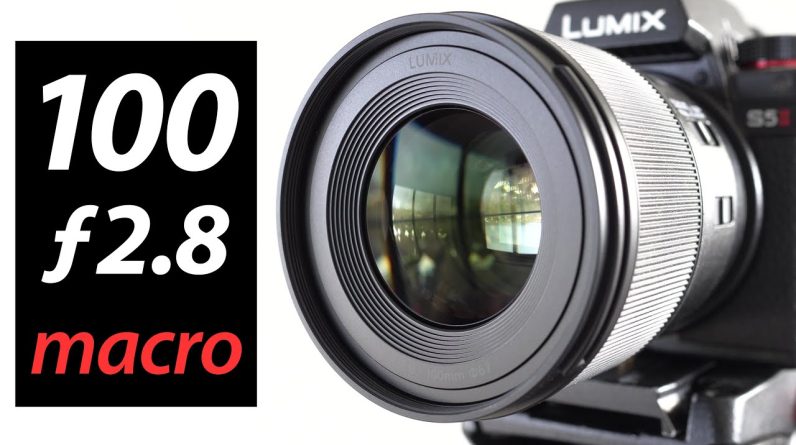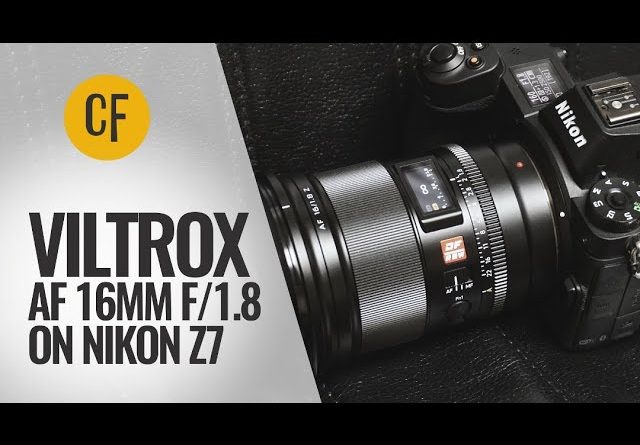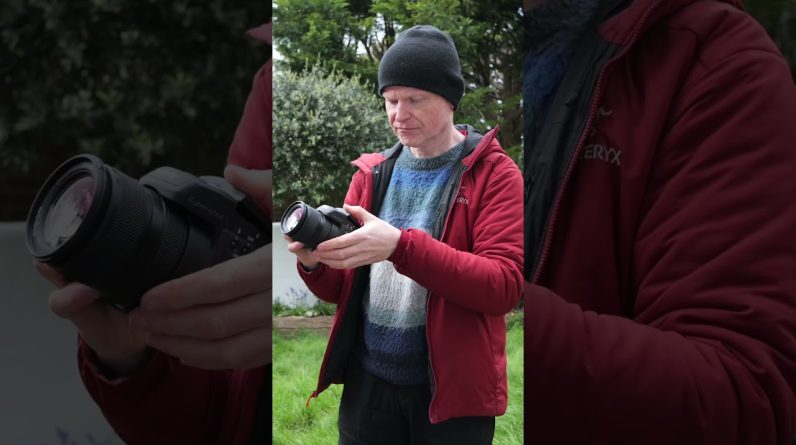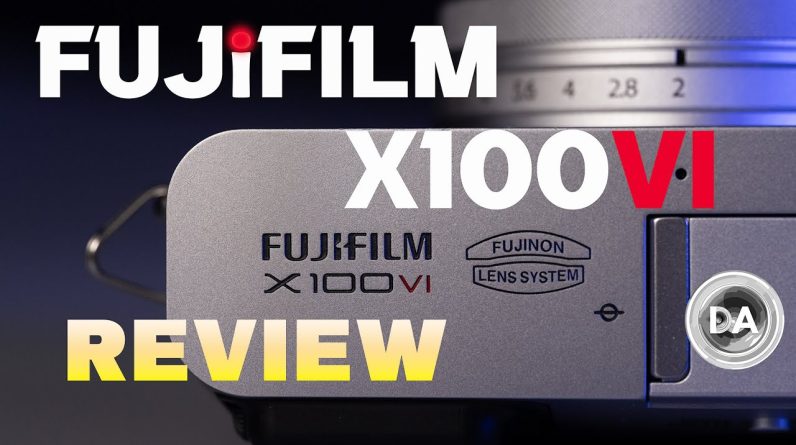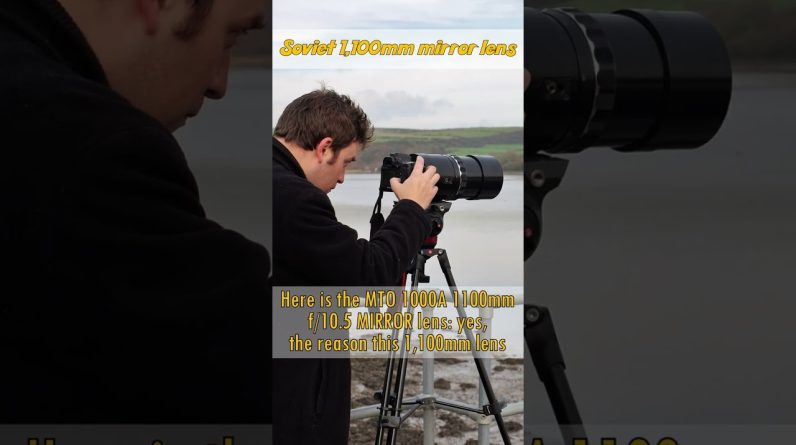[Music] Foreign Hi I'm Dustin Abbott and I'm here today To give you my definitive video review Of the fujinon XF 102 400 millimeter at 4.5 to 5.6 r l m o i s w r lens so this Lens is not a new one at this point it Was actually released in February of 2016 but I thought it would be Interesting since I have just spent time Reviewing the much newer 150 to 600 Millimeter to take a look at this in a Couple of ways uh I you know I'm newer To Fuji over the last few years and so I I've been trying to kind of work my way Through the catalog of existing lenses Just to get familiarity with them have a Kind of a point of comparison for new Releases and then of course in this case These are basically the two viable Telephoto options if you want more of a Port Pro grade Zoom outside of this you Basically have only two other options And one of those is the extremely Expensive uh 200 millimeter F2 which Obviously is it's a fantastic lens but It's also six thousand dollars and it's A prime with a more you know kind of Limited scope as far as the focal range Though you can use the included Teleconverter to get a little bit Different of a zoom there as well but Then outside of that you basically have Just the more consumer grade 70 to 300
Millimeter so these two lenses kind of Represent your top options if you want Some serious reach you know all the way Out to 400 millimeters or all the way Out to 600 millimeters and and you also Don't want to break the bank and both Both of them are very similar in price This one comes at about 1900 us this Comes in about 2 000 US Dollars and so As a byproduct I think that there still Are going to be people that are going to Cross shop them even though this lens is Much older I think it's still viable for Two reasons one of those obviously is The form factor not everybody wants to Carry around this big of a lens and While this is and then this 150 to 600 Is an internally zooming while this is An externally zooming lens it still um You know there's still the reality that When you go to pack it this is going to Take up a whole lot less room than what This particular lens is and so it might Be the difference of you know being what Kind of bag you can carry it in or Whether or not you can travel with a Body attached so you can quickly shoot You know there are some real world Considerations there the second reason Why I think that this is still a viable Option is that the aperture range here Is from F 4.5 to 5.6 and interestingly It really stays fairly bright throughout The zoom range
So for example obviously 4.5 uh at 100 Millimeter but at 200 millimeters it's At F5 at 300 millimeters it's F 5.2 and It's not until pretty close to about 350 Millimeters that it becomes Um f 5.6 whereas you are a at least Two-thirds of a stop uh less bright all Throughout the zoom range and so here at 150 millimeters you're already at F 5.6 And for example by the time you get to 400 millimeters you're at F 7.1 on the 150 to 600 and so obviously a much Slower aperture and so in certain Lighting conditions that is going to be A real consideration and so I think that For some people it might still be worth Buying even though that there is a newer And a little bit glitzier looking lens Available at this point so let's dive in And let's break it down here today Taking a look at some of the build and Design Elements here first so again just To break down in case you don't speak Fuji a lot of Clues are there in that Name but the r in the name refers to Having an aperture ring with which you Know is not always the case on a lot of Variable aperture lenses but we do have An aperture ring here and because uh you Know unlike on the prime lenses you Can't just fully rotate it in One Direction this will just rotate Endlessly so that means that there has To be a switch to allow you to switch in
Between having either aperture Controlled via the ring or apps you're Controlled from within the camera and so One of the three switches is dedicated To that the LM and the title refers to Linear motor or in this case we actually Have dual linear Motors more on that in Just a second WR refers to the weather Resistance there are 13 seal points here Starting with a gasket at the lens mount Internal seals throughout a flooring Coating on the front element so a Professional grade of weather sealing Though I will note 150 to 600 it Actually has 19 seal points and so it Has even more internal seals as well ois Refers to Optical image stabilization or Inland stabilization in this case it is Rated up to five stops so of course if You're using it with a lens like the xt5 Where I did my review you're actually Getting a little bit more than that due To being able to you know combine the In-body image stabilization with the Lens stabilization so for example the Shot I could get repeatedly at one tenth Of a second that's about six stops of Stabilization so obviously a little bit Better than what the rating in the lens Alone is the overall dimensions here This lens is 94.8 millimeters or 3.73 Inches in diameter that gives you a very Common 77 millimeter front filter thread The lens is 210.5 millimeters in length
Or 8.29 inches and as you can see the 150 to 600 is about four inches longer And of course even with the lens Extended it's still considerably shorter Than what the 150 to 600 is it's also Lighter its weight is 1375 grams or Right over three pounds and so you know Not a lightweight lens obviously Particularly if you're unaccustomed to Dealing with telephotos but it's you Know it's it's still moderately weighted When it comes to competing type lenses I Will note that something that's pretty Obvious here and that is that this lens Obviously it's not a new one this is a Loaner copy from Fuji it's been I'm sure Used many times but it definitely at This stage suffers from some pronounced Zoom creep and so you know in either Direction and so as a byproduct you're Going to want to employ the lock which Unfortunately only locks at the 100 Millimeter position and so a lot of Times I like to demonstrate you know Comparative length of lenses and I Couldn't even get that shot because I Couldn't lock it in that position and of Course it immediately drops down and so Uh that is one you know serious design Difference in that the 150 to 600 is an Internally zooming lens and so it Actually doesn't change length as you Change the focal length again two Different design philosophies which does
Allow you to really kind of choose which Form factor that you prefer I've already Noted that one of the switches dedicated To the aperture control the two others Are one of them is a focus limiter just Two positions full or five meters to Infinity and there's also an on off or The optical image stabilization now There are no modes to select which a lot Of times lenses like this do have a Fuji Does say that it is smart sensing so if You're panning it will turn off one axis Of stabilization to allow for smoothing Smoother panning results but you know That's just maybe one area where the Lens does feel a little bit dated as it Doesn't have some of the features like The newer lens has you know this lens Has the ability to do some function set Functions and you know just a little bit More in terms of the feature package There in this case another uh distinct Difference here is the approach to the Tripod collar and the tripod foot and so As you can see obviously a much bigger Foot on the new 150 to 600 it is a ARCA Switch compatible whereas we have a much Stubbier foot here on the 100 to 400 it Is not ARCA compatible however the whole Tripod collar is removable here whereas Only the foot is removable on the 150 to 600. our minimum Focus distance here is 1.75 meters and you have a maximum Magnification of 0.19 times and so
That's not as high as what some of the Newer lenses in this class can provide However it is still a decent amount of Magnification and it is a nice flat Plane of focus and a fairly good Performance up close even wide open on That I will finally note on the build Front that the 100 to 400 is compatible With both Fuji's 1.4 times and two times Teleconverter and so that gives you some Serious reach if you're looking at the Full frame equivalent with 1.4 times That get you up to about 853 millimeters Of full frame equivalent reach maximum Apture of f8 and then on the two times It gets you up to 1219 millimeters at a Maximum aperture of f11 again that's Full frame equivalent Um aperture there I mean it's 800 Millimeters in terms of the stated focal Length with that two times teleconverter But obviously that is some serious reach That you can get with that combination Though obviously as you slow the Aperture down you can't expect both some Slowdown to autofocus particularly in Dimmer lighting conditions and then also You're going to see some degradation of Image quality due to adding those extra Elements in the teleconverters I Personally am not a fan of two times Teleconverters I'll use 1.4 times on Occasion and so of course your mileage May vary your tolerance for image
Quality is going to vary as well So talking about autofocus here Um as noted we have dual linear Motors And while this is an older Focus system I find that it still holds up quite well And when I was using it side by side With the new 150 to 600 I didn't really Feel like there was much of a difference When it came to tracking performance I Saw a similar type results a similar Type stickiness on the eye and as far as The end results I saw similar results And so as you can see from this clip That the tracking performance was quite Good there was only a few little minor Swings throughout that just a moment of Back focus but overall a stickiness as I Noted was good and the tracking Consistency was good even when the Subject kind of turned their eyes more Towards profile looking at something as They ran towards the camera and so I Think that you know this lens is Benefiting from the fact that autofocus Is continuing to improve and of course The AI learning and the new xt5 is going To apply to all lenses and that includes These that are a little bit older and so As a byproduct we've probably never seen Such good performance as far as tracking Is what we're going to see on the most Recent bodies and of course probably Better still with something like the Xh2s I also found that animal iaf worked
Very well it locked onto the eye it Stayed sticky and as I looked at the end Results at a critical level which you Can really do with 40 megapixels I found That they were well focused and so I Also did a little bit of shooting of Basketball action with this and it was In only a moderately lit gym this was Just you know casual pickup and so no Real kind of lighting to really light up The court and so it was somewhat dim in There and so obviously in that kind of Setting this lens is going to be Preferable to this one for the simple Reason that even with this lens I was Having to shoot at ISO 3200 to get you Know a fast enough shutter speed to at Least somewhat stop action I could have Used even more but if I was using this Other lens I would have been shooting at ISO 6400 and of course with all the Other negative impacts that come with Shooting at you know that high of an ISO And so again that's one reason why you Might still consider this this lens you Know even in 2023 relative to the 150 to 600. so let's dive into the image Quality and to see if there is anything That stands out there in performance so First of all let's take a quick look at That actual focal range here so starting At a hundred millimeters this is how I Could frame the scene this is in 16 9 Obviously and then here is at 400
Millimeters so it shows just how much Reach you have to be able to you know Zoom in here From this kind of magnification level to This kind of magnification level it's Obviously going to be a really really Useful focal range for a lot of Different applications now Fuji profiles Correction profiles do a very good job Of masking flaws but I like to you know Look behind the mask just to see what's Being corrected so in this case we have Some pincushion Distortion throughout The range most pronounced here at 100 Millimeters and then you can see a bit Of vignette though nothing too severe You can see obviously that the Correction profile has no problem giving You a nice clean result after that if we Jump on to the 200 millimeter range we Can find that again there continues to Be some pincushion Distortion and some Vignette Just a Little Bit Stronger on The vignette front but again it corrects Up nicely and then at 400 millimeters You can see that the pin cushion Distortion remains and uh vignette maybe Just a little bit heavier and so it also Corrects well so I will note the 150 to 600 millimeter is a little bit better in Both of these metrics though at the end Of the day I'm not sure it's going to Make a radical difference because you Are going to be shooting with those
Correction profiles on and there's Nothing so severe here that I think it's Actually going to cause much damage in The process of correcting it I also Found that longitudinal chromatic Aberrations were nicely corrected you Can see in this particular shot lots of Opportunity for fringing in this case But we can see that we have got a nice Control of that and we have a nice Neutral background when it comes to a Longitudinal chromatic aberrations also For lateral chromatic operations I have The correction turned off here so we can See looking up into the snowy Branch Areas along the edge of the frame these Transition areas where you would see That fringing that it's just not there And so also our lateral chromatic Aberrations are well controlled So a couple of notes before we dive into The resolution and contrast section First of all I am doing this test on the 40 megapixel uh xt5 body so obviously That is a a much higher resolution Point Than what existed at the time that the Lens was designed and so this is a Little bit of a torture test because it Is pushing the envelope of what the lens Was designed for the second thing to Consider is because of that high Resolution diffraction arrives much Earlier and so in some ways I found that In my review of the 150 to 600 that it
Was compromised even more so by Reviewing it on a high resolution body Because in many cases you didn't have Any room to stop down before diffraction Started to limit the improvements you Might see from stopping down there's a Little bit more room on this particular Lens particularly at the wide end and so We'll see kind of a benefit that comes From that so this is that 200 Magnification so again torture tests yes But this is the way that I do my review So we're going to be consistent with it In the center of the frame no problem Here at 4.5 that's a really strong Result good contrast good detail Likewise as we move off towards the mid Frame contrast a little bit lower but Still it looks quite good and right down Into the corner we see a strong result With just a little bit more reduced Contrast now in this case the lens Benefits from being able to stop down to F 5.6 and still to get both the stop Down but also to be under the threshold For when diffraction starts to kick in Which is about F 6.3 or so and and so in This case we can see that there is some Further Improvement to be had by Stopping down particularly here in the Mid frame I see a little bit more of a Bump and looking down in this corner you Can see that clearly we've got some Improved contrast in detail and if we
Pop up to the opposing Corner we can see That the same is true there and also you Can see a good centering on this that It's consistent on both sides now if you Stop on down to f8 you're going to find That in this case we've kind of maxed Out already and so diffraction is start To you know maybe play a counterbalance To where whatever and improve contrast Or detail we would get is being canceled Out by diffraction and so in this case I Would say that F 5.6 represents a peak So in this case a minimum aperture IS F 22 and I would um definitely not advise Going there you can see diffraction has Just robbed most of the contrast and a Lot of the detail away to where we have A you know a much softer looking image Result now if we jump on to the 200 Millimeter range maximum aperture is now F5 and we can see that the results are Still quite good in the center of the Frame though I would say just a little Bit softer than what we saw at a at 100 Millimeters we can see stopping down to F 5.6 makes only a minimal amount of Improvement here Um and you know it's it's very very Minute I'm not sure that you know you Would necessarily pick it up in most Situations and that seems to be the case Everywhere that we look on the frame now If we stop down from the 5.6 to f8 Um in this case I would say we do see
Enough of an improvement to uh that I Would recommend going there because I Think that your contrast and detail You're getting from stopping down is Offsetting whatever damage that Diffraction is doing and so giving you Just a little bit more image quality so At 300 millimeters maximum aperture is f 5.2 so not much of a stop down to F 5.6 And so they're but you know surprisingly There is a little bit of improvement as You can see a little bit more contrast a Little bit more detail that is there in The mid frame however the results are Not as sharp as what we've seen Previously nor are they down in the Corner stopping on down to f8 provides a Very Mild improvement but you know Neither are we seeing as a greater Results as what we have seen previously So just out of curiosity I thought I Would compare the 100 to 400 with 150 to 600 here at 300 millimeters so I'm using F8 because maximum aperture on the 150 To 600 is f 6.4 I think at that point so It's kind of a hard comparison point so What we can find if we compare in the Center of the frame is that the Um 100 to 400 is just a little bit Sharper here you can just see a little Bit more detail and contrast in the lips There and if we look at the numbers here They're a little bit more defined Looking at the mid frame the results are
Fairly similar not really a whole lot to Set either one apart and down into the Corner we can see also that the results Are fairly similar we'll take a look at The other corner and up here I would say I slightly favor the 150 to 600. so you Can see that there's really not a lot Separating these lenses optically So finally at 400 millimeters maximum Aperture is f 5.6 we can see that the Center result is okay wide open stop Down to f8 it does get a little bit Sharper mid frame result is a little bit Softer uh there shows a dip in the mid Frame that we can certainly see here Though it does also show a bit of a Correction to the corners and I'm not Sure I really see that so much let's see If this upper corner looks a little bit Better maybe it does and so Um certainly there might be a little bit Of improvement there but so if you're Shooting in the middle of the frame a Fairly decent result but a little bit Better when stopped down to f8 so even Though uh just take a look at a few real World shots even though I was shooting At a high ISO so obviously in optimal Conditions but at the same time I felt Like here at 261 millimeters F5 that you Know it shows off the potential of the Lens that's pretty nice detail and Contrast there on that image likewise Here this is at a little over 200
Millimeters and you can see good detail That shows goes up there on that Particular image This shot is at 400 millimeters F 5.6 And I'll go full frame with that and and So you can see that if I go into a pixel Level that you know on the plane to Focus contrast doesn't blow my mind but The detail here is pretty good and of Course the fact that chromatic Aberrations are well controlled allows The image if you look at it globally to Look quite sharp and you know good color In detail there So a quick return to our maximum Magnification you can see here that at 400 millimeters in some ways I think That the you know up close results Actually look better than what my Typical chart test results did Um and so in this case I'm a little bit More impressed by the detail here and as You can see as we pan across that the You know plane of focus is fairly flat And and so a not a bad up close end Result Here's another 400 millimeter wide open Result and so as you can see uh I think That the detail on the contrast in the Image looks quite good particularly Since we're on that 40 megapixel body I Will point out however as we kind of Transition to talking about bokeh you Can see some pretty obvious
Um like inner lines even on this where It's they're not necessarily super Bright specular highlights I mean this Is just um you know kind of glittering On the snow it's not even like a Christmas light type seam and so Obviously that bokeh quality is it's not Mind-blowing we'll we'll put it kindly Returning this image for a moment you Can see obviously if you have a good Compression type ratio you're close to The subject the background's a little Bit further away you can get a really Soft end result because it just blows it All out likewise in this image the Background is far enough away even Though I was a little bit further from The subject that we have a nice blur but Then if you change that ratio just a Little bit you can obviously see more Lines and edges and things that are less Desirable in the out of focus rendering Finally flare resistance and a long Telephoto lens it becomes less of a Factor in that it's much less likely That a Bright Light is going to be Directly in the frame however in this Case you can see that while it is Diffused some through a tree I did shoot Up into the sun here and I didn't see Anything you know terrible in terms of Ghosting artifacts coming through and so It may not be a complete final verdict On that the unfortunate thing for me
This time of year is I don't actually See the sun all that often winter in Ontario Sun comes but rarely so anyway Hopefully this helps to give you a Little bit of a baseline for the optical Performance So I would say having looked through This number one comparing the two lenses There's not really anything that stands Out on either one of them relative to The other in terms of the image quality But at the same time on the 100 to 400 Nothing really stands out to me as being Either exceptional or being Exceptionally bad it's just kind of a Middle of the road it's a good not great Performance but I think one that a lot Of people are going to be satisfied with In a lot of situations and so in Conclusion I would say that this lens Does show its age and some of its Design Elements you know it feels a little bit More dated in terms of the package here And maybe some of the features that I Would like to see on a lens of this Class that aren't there but at the same Time it um it still holds up quite well In terms of performance autofocus image Quality it doesn't feel a whole lot Different in performance to the much Newer 150 to 600 millimeter and so I Think that it's still a valid option and As noted I would consider it for two Reasons I would consider it if you need
A little bit faster aperture maybe You're shooting more in a stadium type Condition and your lighting is going to Be a little bit poor and so you know This lens is going to be too slow and You don't have the budget to go to the You know to the high end 200 millimeter F2 And the other reason I would consider it Is if that you need a smaller form Factor for you know whatever packing Conditions that you need for the lens Like that and so if you are looking at That and you want to save 100 bucks it Is still you know well worth Consideration at this point I'm Dustin Abbott and if you look in the Description down below you can find Linkage to my full text review and also An image gallery if you want to look at Some photos there are buying links there You can also find linkage there to Become a patron or to purchase Channel Merchandise and of course if you haven't Already please like And subscribe thanks For watching have a great day and let The light in [Music] Foreign

